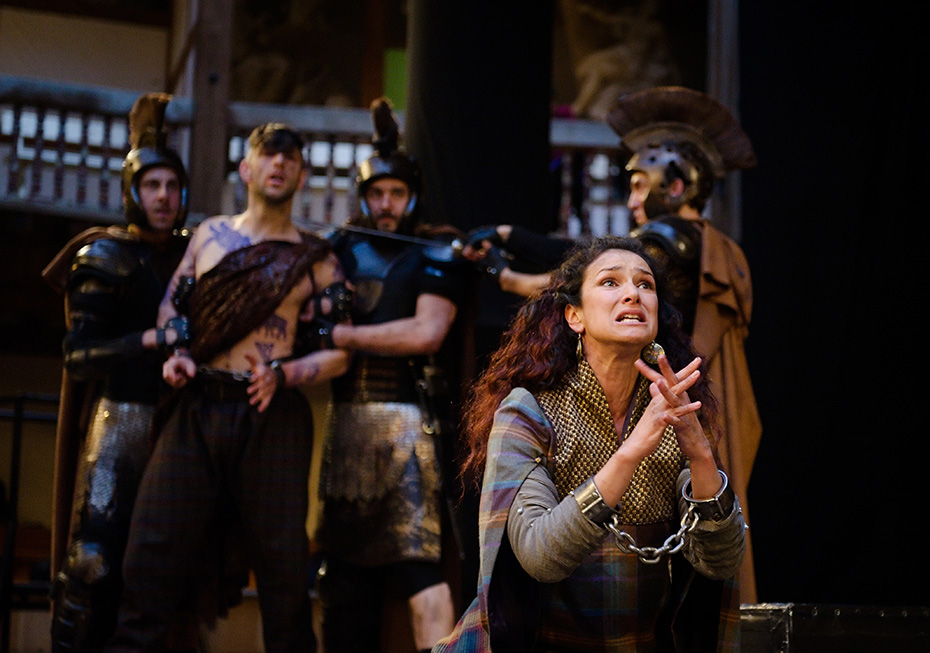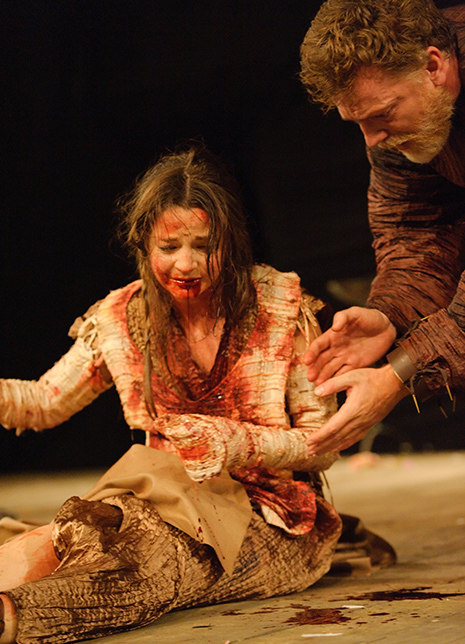Author Philip Womack connects Shakespeare’s bloodiest work with the extreme views of sexuality and violence explored by J.G. Ballard The recent, excellent, production of William Shakespeare’s Titus Andronicus at the Globe caused people to faint – at the show I attended, at least one was carried out. Yet it isn’t a piece of slasher-fiction, revelling in senseless lashings of blood. The violence is carefully orchestrated and an inherent, stylised part of the texture of the plot. Titus’ leading influence is the story of Philomel and Tereus in Ovid’s Metamorphoses, in which Tereus rapes Philomel and cuts out her tongue so that she can’t say who did it; she reveals the culprit by sewing in a sampler, and Procne, her sister, takes revenge on him by serving him up his own son for his dinner.
The recent, excellent, production of William Shakespeare’s Titus Andronicus at the Globe caused people to faint – at the show I attended, at least one was carried out. Yet it isn’t a piece of slasher-fiction, revelling in senseless lashings of blood. The violence is carefully orchestrated and an inherent, stylised part of the texture of the plot. Titus’ leading influence is the story of Philomel and Tereus in Ovid’s Metamorphoses, in which Tereus rapes Philomel and cuts out her tongue so that she can’t say who did it; she reveals the culprit by sewing in a sampler, and Procne, her sister, takes revenge on him by serving him up his own son for his dinner.
The punning Seneca’s Thyestes hovers in the background: that also sees a father inadvertently eating his own child. In Titus, Lavinia is raped, and her tongue and her hands cut off, going further than Ovid. Lavinia becomes a walking wound, a reminder of hateful violence by her very presence. She does not have, like Philomel, the opportunity to turn into a bird and escape.
“The way that Ballard talks about wounds chimes exactly with Titus Andronicus, a play that is full of wounds, mouths, and secret pits”
 What all of this connects with most is the psychologically extreme views of sexuality and violence that J.G. Ballard explores, particularly in his book The Atrocity Exhibition. There, victims of nuclear attacks, celebrities, rape victims, the angles of rooms and even cars become objects of sexual interest. In particular, a burns victim who wanders a deserted car park seemed a version of Lavinia. The way that Ballard talks about wounds chimes exactly with Titus Andronicus, a play that is full of wounds, mouths, and secret pits: “What subtle hole is this / Whose mouth is covered with rude-growing briers / Upon whose leaves are drops of new-shed blood / As fresh as morning dew distilled on flowers?” says one of the Andronici before falling into a trap. The connotations are obvious.
What all of this connects with most is the psychologically extreme views of sexuality and violence that J.G. Ballard explores, particularly in his book The Atrocity Exhibition. There, victims of nuclear attacks, celebrities, rape victims, the angles of rooms and even cars become objects of sexual interest. In particular, a burns victim who wanders a deserted car park seemed a version of Lavinia. The way that Ballard talks about wounds chimes exactly with Titus Andronicus, a play that is full of wounds, mouths, and secret pits: “What subtle hole is this / Whose mouth is covered with rude-growing briers / Upon whose leaves are drops of new-shed blood / As fresh as morning dew distilled on flowers?” says one of the Andronici before falling into a trap. The connotations are obvious.
As William Burroughs notes in his introduction to The Atrocity Exhibition, “The line between inner and outer landscape is breaking down.” So in Titus the line between dream and reality is blurred: it is a play that exists because of literary constructs that themselves are based on myths, and yet the whole is presented as an historical event taking place in a real city (albeit a Rome that never existed.) People in the play make reference to literature and act because of it: Titus takes control of the story of Procne and uses it to enact his revenge. What is reality? asks the play, just as much as Ballard questions and pokes.
Ideas of civilisation and barbarism resound throughout Titus: the apparently urban (and urbane) Romans are just as, if not more so, soaked in horrors as the barbarian Goths. Ballard’s books deal too with such notions: when does a white-collar worker stop being civilised and start becoming a monster? High Rise explores just such issues.
The violence of Titus Andronicus needs to be viewed similarly to that in Ballard, as part of a matrix. It is a psycho-sexual scheme that covers the very furthest limits of the subconscious, both frightening, and exhilarating.




